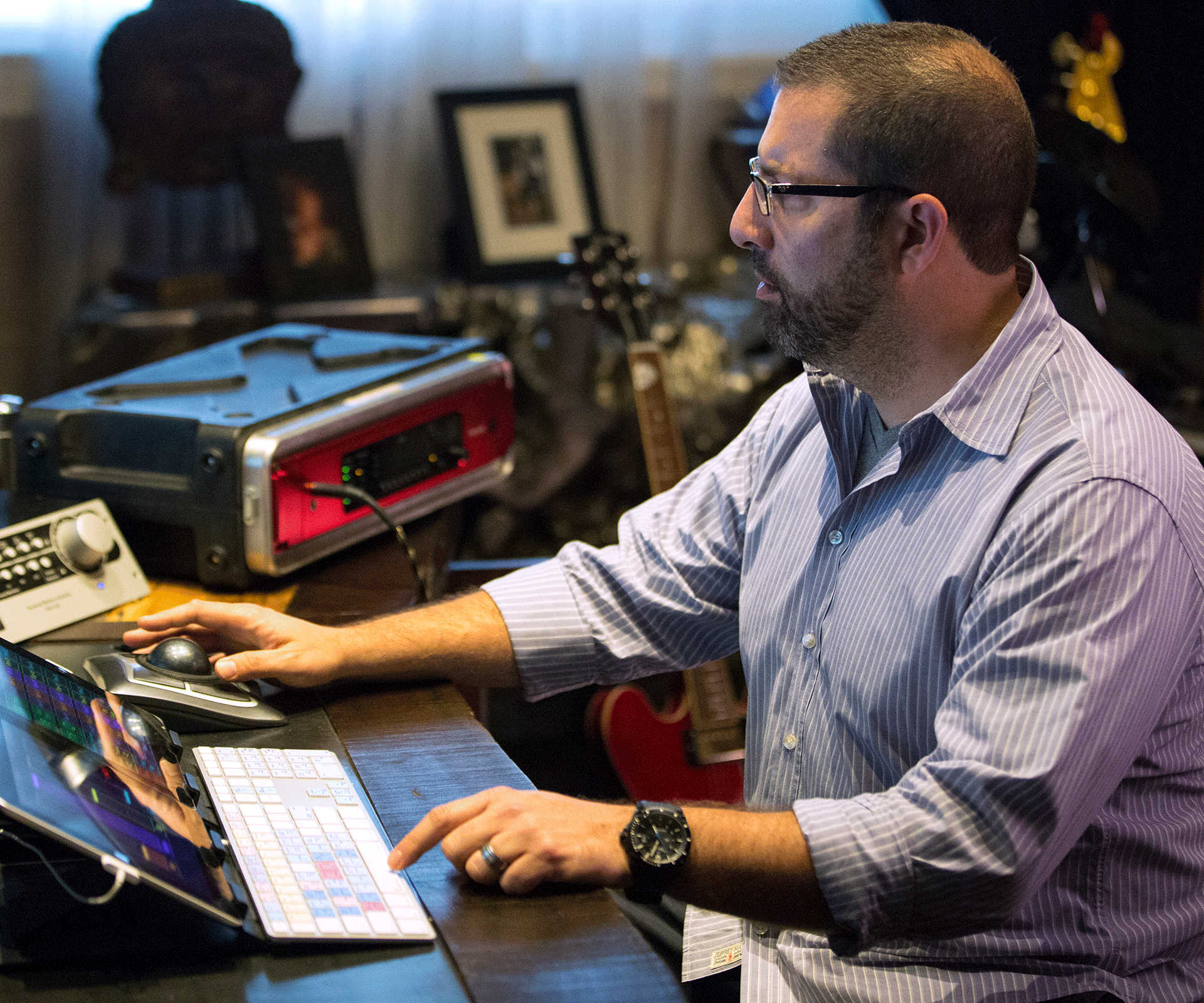Chris Lennertz & RedNet
RedNet Revolutionises Composer Chris Lennertz' Workflow
Chris Lennertz composes music for film, TV and video games from his studio, Sonic Fuel, in El Segundo, California. Like most of his peers, his routine from one day to the next is anything but ordinary. He could be recording strings for a music cue in a movie one day, then scoring themes for a network TV show the next. As a result, he needs a trustworthy multi-channel audio interface system that's flexible enough to let him work to the strict schedules and turnarounds of the film and TV industry. This means being able to to quickly and reliably transfer full musical arrangements between his Cubase composition and sequencing machine and his print rig, a Pro Tools | HD system.
Until early 2014, before discovering RedNet, Chris and his assistant Alex Bornstein were finding it difficult to maintain this flexibility, so they set out on the search for a new system, as Chris explains. “Before we implemented the RedNet system, we had just 16 inputs and outputs into the Pro Tools rig. It was getting to the point where being able to print quickly was no longer working because we were making three or four passes just to capture everything in the mix. We started looking into things like a MADI infrastructure or buying more I/Os for Pro Tools, but then we found out about RedNet and it seemed too good to be true. Soon, we realised it was exactly what we were looking for."

So, with Alex's technical assistance, Chris made the switch to RedNet, purchasing a RedNet PCIe card, two RedNet 5 HD Bridges, a RedNet 2 16-channel A-D/D-A and a RedNet 4 eight-channel mic preamp. Now, thanks to the high I/O count and audio-routing flexibility of the RedNet system and the Dante network on which it operates, Chris and his team can print cues much faster and more reliably than ever before. “With RedNet, we can have 64 ins and outs, so we can print our cues in one pass, and both rigs can use the interfaces… It's pretty crazy."
There are sonic advantages to the RedNet upgrade, as well. Because the transfer between Cubase and Pro Tools takes place in the digital domain at super-low latency, (digital audio is routed internally by RedNet without having to be converted to analogue and back to digital again), the signal quality is not degraded, as it was by the multiple stages of A-D and D-A conversion in the previous rig. RedNet also saves Chris time, and allows him to spend more time being creative, rather than focussing on arduous technical tasks. “It's very important to me that I get as much time to write and conceive as possible, and spend as little time on tech as I have to. To be able to take back the time previously wasted on printing to either see my kids or write better music and be able to come up with themes without having the clock ticking quite as loudly is well worth it."
There are even more upsides to the switch to RedNet: Installation of the system was straightforward, says Alex. “We spent a morning setting up the equipment and once that was done, it just worked. Since then, the boxes have been locked: every morning when I walk in, they're still on." Also, thanks to RedNet, other rooms in the Sonic Fuel building can be used as recording locations. Chris and Alex can take the RedNet 4 eight-channel mic preamp to the live room, for example, and record directly into Chris' rig on the other side of the building. Tracking solo instruments and small ensembles just got a lot easier, says Alex. “Any room in the facility that has an Ethernet connection can be patched in to the RedNet network and you can record there. To be able to quickly record multi-channel audio from anywhere in this environment is huge…"
